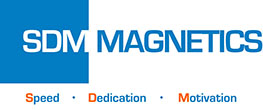Samarium Cobalt magnet has excellent chemical stability and enabled for most applications without any surface treatment. Surface protective treatment is a necessary procedure for the Neodymium magnet, especially sintered Neodymium magnet. Sintered Neodymium magnet possesses multi-phase microstructure and consists of Nd2Fe14B main phase, Nd-rich phase, and B-rich phase. Nd-rich phase exhibit very strong oxidation tendency and will constitute the primary battery with main phase under humid environment. A small amount of substitutional elements is capable of enhance chemical stability of magnets, but come at the cost of magnetic performance. Therefore, protection of sintered Neodymium magnet is primarily aimed at its surface.

Surface treatment of sintered Neodymium magnet can be classified into wet process and dry process. Wet process refers to magnets are processed surface protective treatment in pure water, inorganic solution, or organic solution. The frequently-used wet process includes phosphate, electroplating, electrolessplating, electrophoresis, spray coating, and dip coating. Dry process refers to magnets are processed surface protective treatment through physical or chemical process without contact with solution. Dry process generally contains physical vapor deposition (PVD) and chemical vapor deposition (CVD).
Surface Treatment Classifications of Sintered Neodymium Magnet
| Coating | Thickness (μm) | Color | SST (hrs) | PCT (hrs) | Characteristics |
| BW-Zn | 4-15 | Bright blue | ≥24 | – | Secondly commonly used single layer coating. Poor corrosion resistance. |
| Color-Zn | 4-15 | Shining color | ≥48 | – | Corrosion resistance is better than BW-Zn. |
| Ni-Cu-Ni | 5-20 | Bright silver | ≥48 | ≥48 | Most regular used multi-layer coating. Excellent humidity and salt spray resistance. |
| Electroless Ni | 5-20 | Dark silver | ≥72 | ≥48 | Excellent humidity and salt spray resistance with uniform appearance. |
| Ni-Cu-Ni-Au | 5-20 | Golden | ≥72 | ≥96 | Excellent electrical conductivity and decorative performance. |
| Ni-Cu-Ni-Ag | 5-20 | Silver | ≥72 | ≥96 | Excellent electrical conductivity and decorative performance. |
| Ni-Cu-Ni-Sn | 5-20 | Silver | ≥72 | ≥96 | Excellent humidity resistance. |
| Phosphate | 1-3 | Dark grey | – | – | Temporary protection. |
| Aluminum | 2-15 | Bright silver | ≥24 | ≥24 | Noticeable coating. |
| Epoxy resin | 10-30 | Black/Grey | ≥72 | ≥72 | Excellent humidity and salt spray resistance. Superir binding force. |
| Parylene | 5-20 | Colorless | ≥96 | – | Excellent humidity, salt spray, corrosive vapors, and solvents resistance. Free of pore. |
| Everlube | 10-15 | Golden yellow | ≥120 | ≥72 | Excellent humidity resistance. |
| Teflon | 8-15 | Black | ≥24 | ≥24 | High temperature and rub resistance. Self-lubricant and 100% water-proof. |
| Note: anti-corrosion capability of coating is also influenced by the shape and size of magnet. | |||||
Surface Treatment of Bonded Neodymium Magnet
In addition to submicron grain structure, isotropic melt-spun NdFeB powder possesses very little Nd-rich phase, thereby, its corrosion resistance is much stronger than sintered Neodymium magnet. However, compression molded magnet made by isotropic melt-spun NdFeB powder owns relatively higher porosity and a certain proportion of fine powder, thus commonly utilize electrophoretic epoxy coating or spray epoxy coating to realize surface protection. Injection molded magnet usually does not require surface treatment.
Protective Performance Evaluation of Neodymium Magnet
As the functional device, operational environment of Neodymium magnet has its particularity in comparison with structural materials like steel. There also exist different evaluation indexs to protective coating of Neodymium magnet for separate quality control standards, application design requirement, and scenarios. The common indexs include corrosion resistance, mechanical, and a series of indexs aimed at functional use. Corrosion resistance index is the data or trend curve to evaluate the endurance capability of material to different chemical medium. Temperature and humidity bias test or highly accelerated temperature and humidity stress test (HAST, otherwise known as PCT) can characterise the ability to isolate the water and steam. Then salt spray test can be used to evaluate isolation capability to electrolytes. Routine testing items of mechanical contain binding force test, hardness test, cross cut test, drop test, thermal cycling testing, and thermal shock testing. Further functional indexes extend to coating thickness, antibacterial properties, adhesive properties, electrical conductivity, wear resistance, oil resistance, and UV resistance.



May 9, 2018
마그넷 표면 처리에 관해 자료를 참고하던 중 궁금한 점이 생겨 문의드립니다.
귀사와 타사의 시험 결과가 달라서, 시험 기준을 참고하고자 하니
각각의 표면처리에 실행한 테스트들의 실험 조건을 알려주시면 감사하겠습니다.
(Salt Spray Test, Pressure Cooker Test, Thermo Hygrostat Test의 온도, 염수 농도, 습도, 판정기준 등등)
May 9, 2018
I’m calling to ask you a question when I was looking at the material regarding the surface of the magnet.
As test results are different from those of your company, we would like to refer to the test criteria.
I would appreciate it if you could tell me the experimental conditions of the tests you ran on each surface.
(Salt Spray Test, Pressure Cooker Test, Thermosyphic Hygrostat Test Temperature, Salt Water Concentration, Humidity, Judging Criteria, etc.)